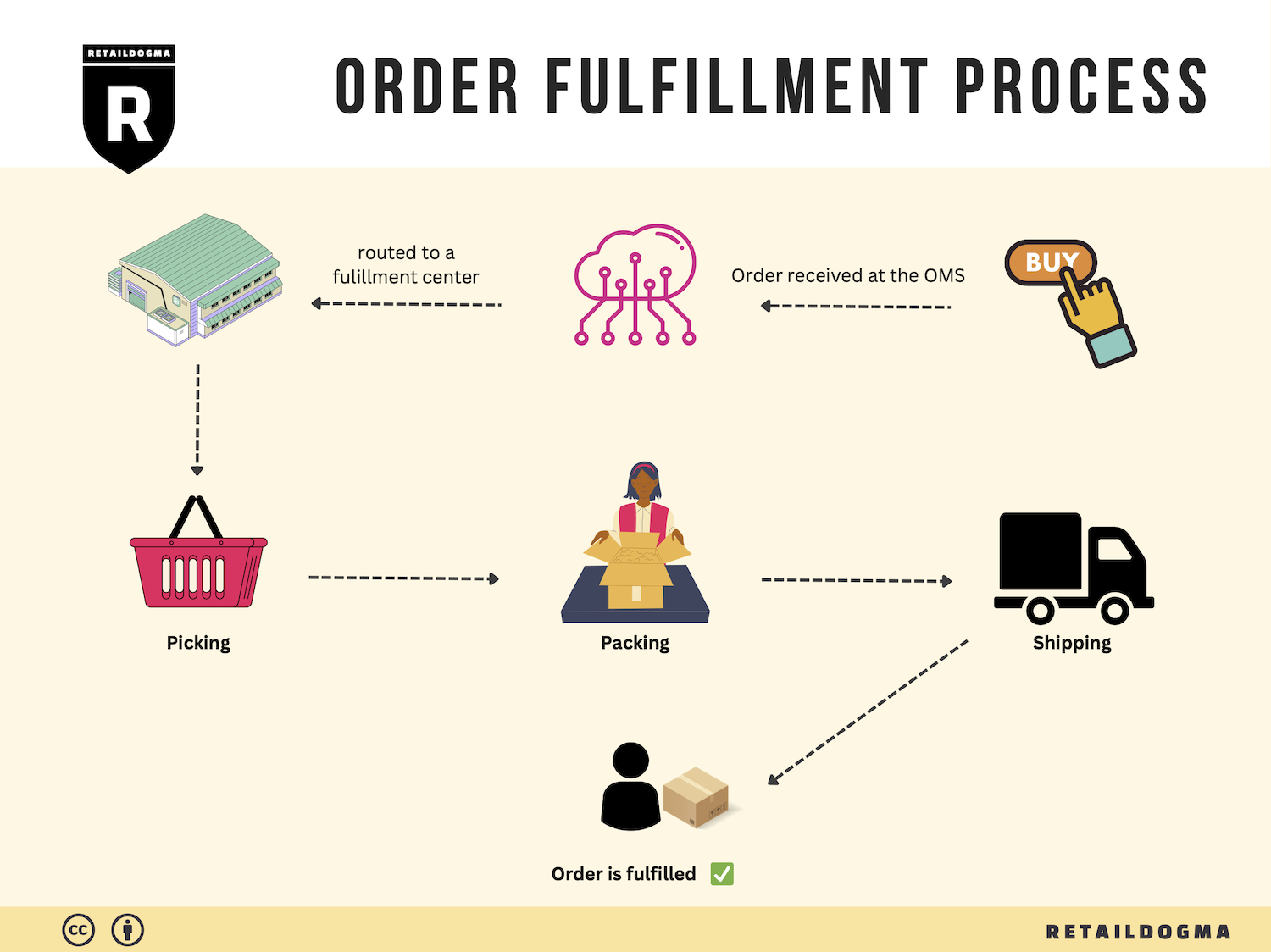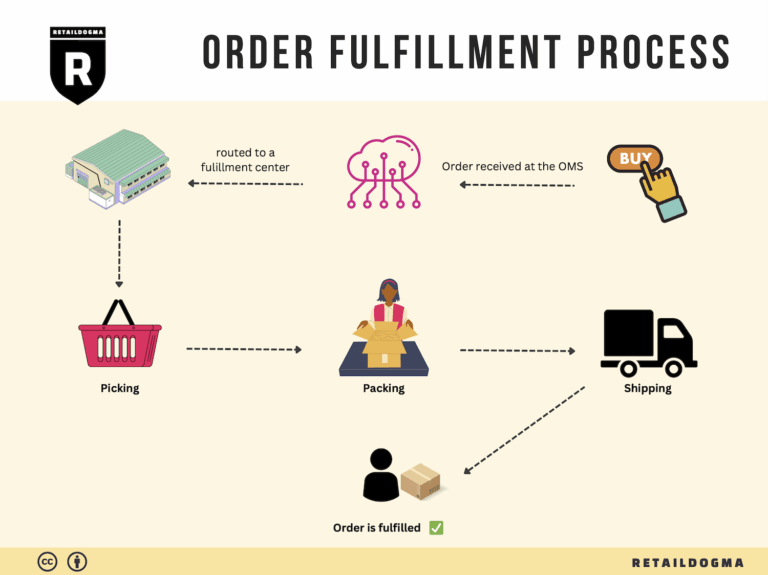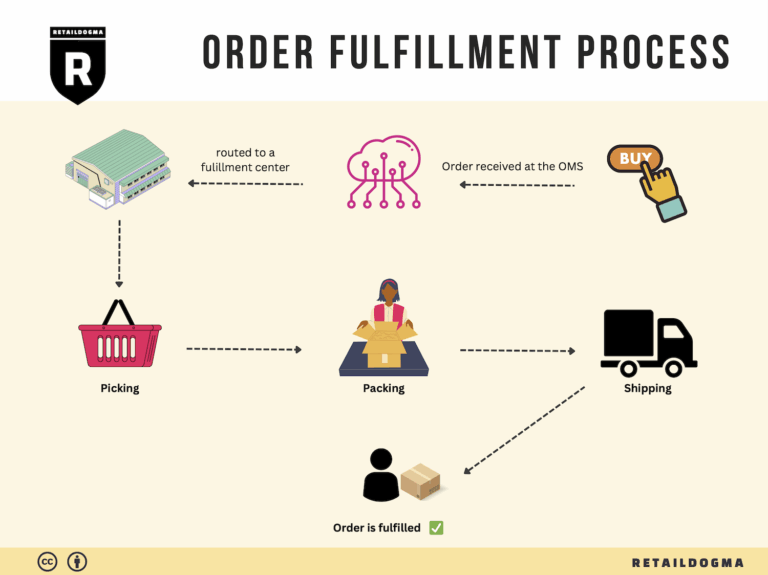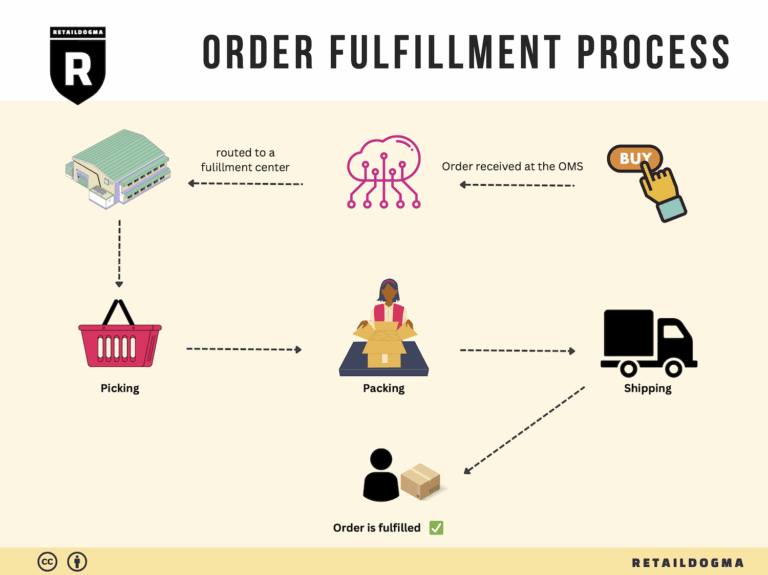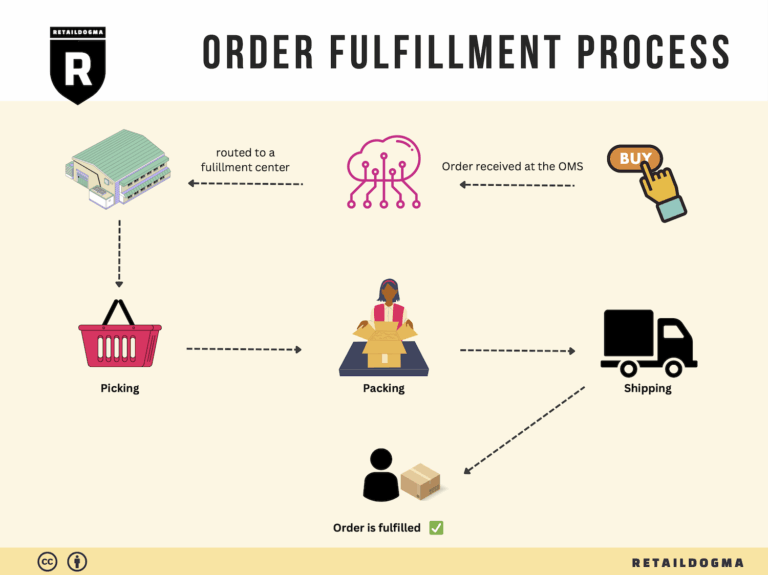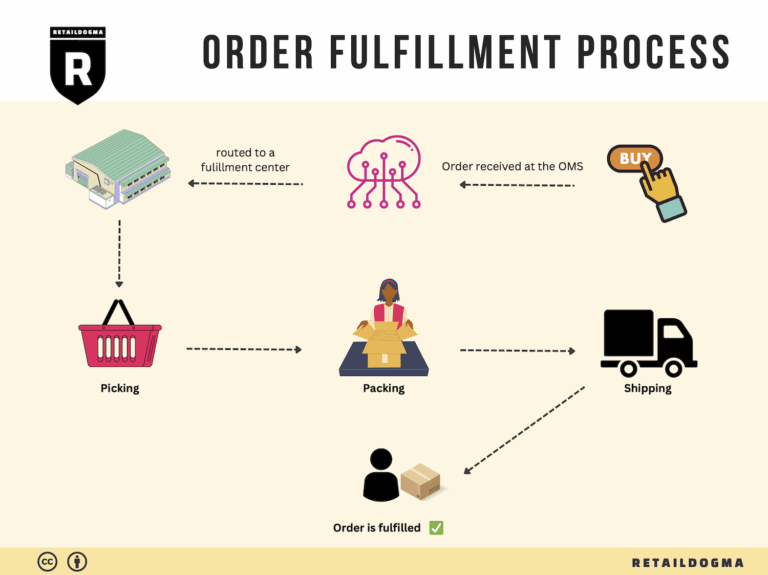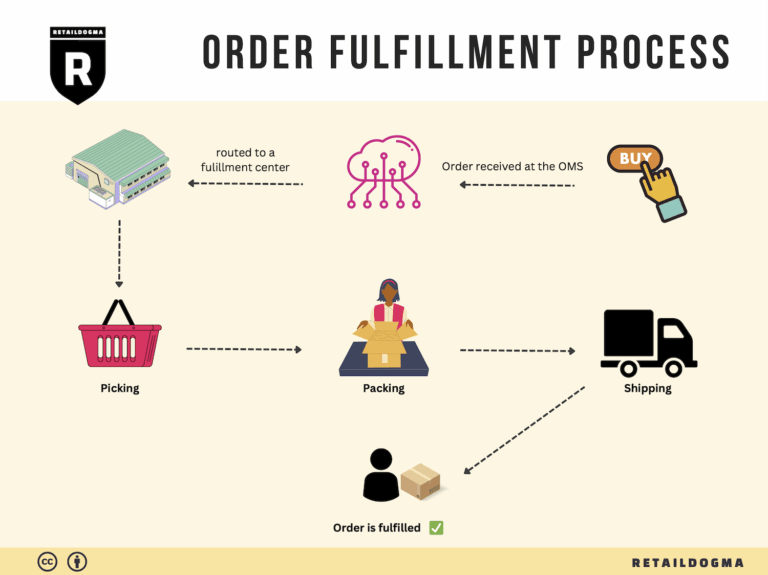How Order Fulfillment Works: A Step-by-Step Guide for Businesses
What is E-commerce Fulfillment? An Introduction for Growing Businesses
Understanding the Challenges of Order Fulfillment
As your online business begins to scale, you may find yourself grappling with the complexities of packing and shipping orders. This common pain point can quickly become overwhelming, diverting your focus from growth strategies to logistical challenges. The fulfillment process—the vital link between your products and your customers—can dictate your overall efficiency and customer satisfaction. Understanding how to navigate this process is crucial for maintaining your business’s momentum.
Defining E-commerce Fulfillment
E-commerce fulfillment is simply the process of getting a product from your inventory to your customer’s doorstep. It encompasses a range of activities, including receiving inventory, storing products, picking and packing orders, and shipping them out. For growing businesses, mastering this process can mean the difference between satisfied customers and lost sales.
What This Guide Covers
In this comprehensive guide, we will explore several key aspects of e-commerce fulfillment that are essential for any business looking to scale:
-
Fulfillment Models: We will delve into the various fulfillment models available, such as Third-Party Logistics (3PL) and Fulfillment by Amazon (FBA). Understanding these options will help you choose the right approach for your specific needs and growth plans.
-
Core Services: We’ll outline the core services offered by fulfillment partners, including inventory management, order processing, shipping, and returns handling. Knowing what services to expect will aid you in evaluating potential partners.
-
Choosing the Right Partner: Selecting a fulfillment partner is a critical decision that can impact your operations. We’ll provide practical tips on what to look for, from technology integrations to service reliability and geographic advantages.
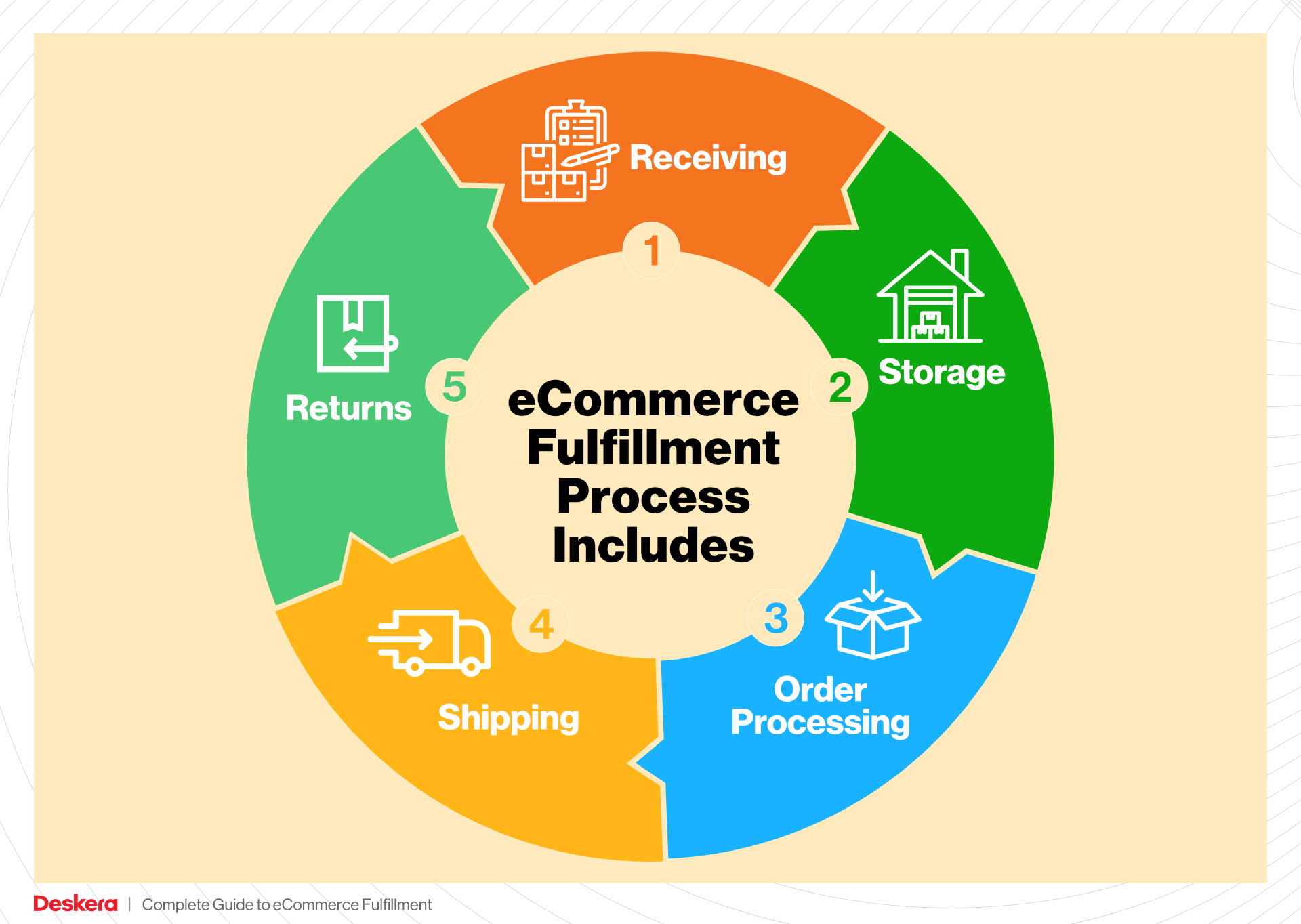
-
Pricing Considerations: We will discuss the various pricing structures you may encounter, helping you understand how to budget for fulfillment services without sacrificing quality.
Empowering Your Business Decisions
The ultimate goal of this guide is to empower you with the knowledge and insights needed to make informed decisions about your logistics strategy. By understanding the intricacies of e-commerce fulfillment, you can streamline your operations, enhance customer satisfaction, and focus on what you do best—growing your business. Whether you’re just starting out or looking to optimize your existing processes, this guide will serve as your roadmap to effective and efficient fulfillment.
What You’ll Learn In This Guide
- What is E-commerce Fulfillment? An Introduction for Growing Businesses
- The Order Fulfillment Process: From ‘Buy’ Button to Customer’s Door
- Comparing Fulfillment Models: In-House vs. 3PL vs. Dropshipping
- A Deep Dive into Amazon FBA: Pros, Cons, and Who It’s For
- Core Services Offered by Fulfillment Centers
- How to Choose a Fulfillment Partner: A 6-Point Checklist
- Understanding Fulfillment Pricing: A Breakdown of Common Fees
- Frequently Asked Questions (FAQs) about Fulfillment
- Conclusion: Is Outsourcing Fulfillment the Right Move for Your Business?
- Important Disclaimer
The Order Fulfillment Process: From ‘Buy’ Button to Customer’s Door
1. Receiving Inventory
The first step in the order fulfillment process is the receiving of inventory at the fulfillment center. When products arrive at an Amazon Fulfillment Center, such as PHX7 in Phoenix, they undergo a thorough inspection to ensure that they match the purchase order in terms of quantity and quality. This step is crucial for maintaining inventory accuracy and ensuring that the right products are available for customers.
During this process, each item is assigned a Stock Keeping Unit (SKU), a unique identifier that helps track the product throughout the fulfillment process. Proper receiving practices help avoid discrepancies and potential stockouts, which can lead to lost sales and dissatisfied customers. Additionally, accurate receiving lays the foundation for effective inventory management and helps maintain the overall efficiency of the supply chain.
2. Warehouse Storage
Once the inventory has been received and checked, the next step is warehouse storage. Products are organized and stored in designated locations within the fulfillment center. This organization can involve several strategies, such as using shelving systems, pallet racks, or bins, depending on the type and size of the products.
Effective storage is vital because it directly impacts the efficiency of order fulfillment. A well-organized warehouse allows for quick retrieval of items when orders come in, reducing the time it takes to process each order. Key terms associated with this step include “slotting” and “binning,” which refer to the strategic placement of products to optimize picking efficiency. By maximizing the use of space and ensuring that popular items are easily accessible, businesses can significantly improve their order fulfillment speed.
3. Order Picking
Order picking is the process where fulfillment center staff retrieve items from their storage locations to fulfill customer orders. This step typically utilizes pick lists, which are documents that outline the items needed for each order, including their locations within the warehouse. There are various picking methods, such as single order picking (retrieving items for one order at a time) and batch picking (retrieving items for multiple orders simultaneously).
The importance of order picking cannot be overstated; it is often the most labor-intensive part of the fulfillment process. Efficient picking practices can lead to faster order processing times and improved order accuracy. Implementing technology such as barcode scanners or RFID systems can further streamline this process, reducing human error and enhancing productivity.
4. Order Packing
After items are picked, they move to the packing stage. Here, products are carefully packed into boxes or containers, ensuring that they are secure for transit. This process includes selecting the appropriate packaging materials, such as cushioning for fragile items, and generating shipping labels that include tracking information.

Packing is a critical step because it not only protects the products during shipping but also enhances the customer experience. A well-packed order can lead to positive feedback and repeat business. Key terms associated with packing include “dimensional weight” and “packaging optimization,” which refer to strategies for reducing shipping costs and ensuring that the packaging meets carrier requirements. Investing in quality packing materials and training staff in efficient packing techniques can significantly reduce the chances of damage during transit.
5. Shipping & Delivery
The final step in the order fulfillment process is shipping and delivery. Once orders are packed, they are scheduled for shipment to the customer’s address. Businesses must choose the right shipping carriers and methods to ensure timely delivery. Options may include standard shipping, expedited shipping, or same-day delivery, depending on customer expectations and budget.
Shipping and delivery are critical for customer satisfaction. Late or damaged deliveries can lead to negative reviews and lost customers. Key terms in this stage include “last-mile delivery,” which refers to the final leg of the shipping process from the distribution center to the customer’s door. Utilizing technology for tracking shipments and optimizing delivery routes can enhance the customer experience and improve operational efficiency.
In summary, understanding and efficiently managing each step of the order fulfillment process—from receiving inventory to shipping and delivery—is essential for scaling an e-commerce business. By focusing on best practices at each stage, businesses can enhance operational efficiency, reduce costs, and ultimately drive customer satisfaction.
Comparing Fulfillment Models: In-House vs. 3PL vs. Dropshipping
Fulfillment Model Comparison
| Model | Who Handles Inventory | Best For (Business Stage) | Key Advantage | Key Disadvantage |
|---|---|---|---|---|
| In-House Fulfillment | Business itself | Startups to mid-sized firms | Full control over inventory and process | High operational costs and complexity |
| Third-Party Logistics (3PL) | Third-party provider | Growing to large businesses | Scalability and access to expertise | Less control over inventory and processes |
| Dropshipping | Supplier | Startups and niche sellers | Low upfront investment and risk | Lower profit margins and reliance on suppliers |
In-House Fulfillment
In-house fulfillment involves managing the entire logistics process internally, from warehousing to packing and shipping. This model is often adopted by startups and mid-sized firms that wish to maintain complete control over their inventory and customer experience. The key advantage of in-house fulfillment is the ability to customize processes and maintain a direct line of communication with customers, enhancing service quality. Businesses can also implement unique packaging and branding strategies that can lead to increased customer loyalty. However, this model comes with significant disadvantages, primarily related to operational costs. Warehousing, staffing, equipment, and technology investments can quickly add up, making it a challenging model to sustain, especially for businesses with fluctuating order volumes. Additionally, managing logistics internally can introduce complexity and may distract from core business activities such as product development and marketing.
Third-Party Logistics (3PL)
Third-party logistics (3PL) providers take over the warehousing, order processing, and shipping functions for businesses. This model is ideal for growing to large businesses that need to scale operations without the burden of managing logistics in-house. The primary advantage of using a 3PL is scalability; businesses can easily adjust their logistics operations based on demand fluctuations without incurring the overhead costs associated with in-house fulfillment. 3PLs also bring specialized expertise in logistics, allowing businesses to benefit from improved shipping rates, advanced technology, and efficient order management systems. However, relying on a 3PL means giving up some control over inventory and fulfillment processes. Businesses may face challenges in maintaining consistent quality and customer service, particularly if the 3PL does not align with their operational standards. Additionally, potential delays in communication or issues with inventory accuracy can negatively impact customer satisfaction.
Dropshipping
Dropshipping is a fulfillment model where the seller does not hold inventory but instead relies on suppliers to ship products directly to customers. This model is particularly appealing for startups and niche sellers who want to minimize upfront investments and risks associated with inventory management. The primary advantage of dropshipping is its low barrier to entry; businesses can launch without the need for significant capital to purchase inventory upfront. This allows for a wider product range and the ability to test new products with minimal financial risk. However, dropshipping comes with notable disadvantages, including lower profit margins due to reliance on supplier pricing. Furthermore, sellers have little control over inventory levels and shipping times, which can lead to customer dissatisfaction if suppliers fail to meet expectations. Quality control can also be an issue, as businesses are reliant on third-party suppliers to deliver products that meet their standards. This model may work well for specific niches but can be challenging to scale effectively without establishing strong supplier relationships and operational efficiencies.
Conclusion
Choosing the right fulfillment model is crucial for e-commerce businesses aiming to scale effectively. In-house fulfillment offers control but at a high operational cost, making it suitable for firms looking to personalize their customer experience. 3PLs provide scalability and expertise, ideal for businesses experiencing rapid growth, but can lead to potential quality and communication issues. Dropshipping is a low-risk entry strategy for startups, yet it presents challenges in terms of profit margins and supplier reliability. By understanding these models and their respective advantages and disadvantages, e-commerce owners can make informed decisions that align with their business goals and operational capacities.
A Deep Dive into Amazon FBA: Pros, Cons, and Who It’s For
Understanding Fulfillment by Amazon (FBA)
Fulfillment by Amazon (FBA) is a service offered by Amazon that allows sellers to store their products in Amazon’s fulfillment centers. Amazon then takes care of storage, packaging, shipping, and customer service for these products. This service enables e-commerce businesses to leverage Amazon’s extensive logistics network, ensuring efficient order fulfillment and access to millions of customers.
How FBA Works
-
Setup: Sellers create an Amazon Seller Central account, where they can set up their FBA service. They list their products and create a shipping plan to send inventory to one or more of Amazon’s fulfillment centers.
-
Shipping to Amazon: Once the products are prepared and packaged according to Amazon’s guidelines, sellers ship them to the designated fulfillment center. Each product must have an Amazon barcode (FNSKU) attached, ensuring accurate tracking and inventory management.
-
Storage and Inventory Management: Upon arrival, Amazon stores the products in their warehouse until an order is placed. Sellers can monitor their inventory levels through their Seller Central dashboard.
-
Order Fulfillment: When a customer places an order for a product fulfilled by FBA, Amazon picks, packs, and ships the product on behalf of the seller. This includes handling customer inquiries and returns.

-
Customer Service: Amazon also manages customer service and returns for FBA products, providing customers with a seamless shopping experience.
-
Payments: After the sale is completed, Amazon deducts its fees from the sale price and transfers the remaining balance to the seller.
Pros of Fulfillment by Amazon
1. Prime Eligibility
One of the most significant advantages of using FBA is the ability to offer Amazon Prime shipping. This feature makes products more attractive to Prime members, who often prefer items with fast, free shipping. Being Prime-eligible can significantly increase sales and visibility on the platform.
2. Customer Trust
Products fulfilled by Amazon benefit from the credibility and trust associated with the Amazon brand. Customers are more likely to purchase products that are backed by Amazon’s customer service and return policies, which can enhance conversion rates.
3. Multi-Channel Fulfillment
FBA isn’t limited to Amazon sales. Sellers can use FBA to fulfill orders from other channels, such as their own website or eBay. This flexibility allows businesses to streamline their logistics while still tapping into various sales platforms.
4. Scalability
FBA allows sellers to scale their operations without worrying about the logistics of storage and shipping. As demand grows, sellers can send more inventory to Amazon without needing to manage their own warehousing and fulfillment processes.
5. Time-Saving
By outsourcing fulfillment to Amazon, sellers can focus on other aspects of their business, such as marketing and product development. This time-saving aspect is crucial for entrepreneurs looking to grow their businesses efficiently.
Cons of Fulfillment by Amazon
1. High Fees
FBA comes with various fees, including storage fees, fulfillment fees, and additional charges for long-term storage. These costs can add up and significantly eat into profit margins, particularly for low-cost items.
2. Strict Inventory Rules
Amazon has strict guidelines regarding inventory management. Sellers must adhere to these rules or risk having their products removed from the platform. This includes maintaining adequate inventory levels to avoid stockouts and following packaging requirements.
3. Commingling Risks
FBA products may be commingled with those from other sellers. This means that if a customer returns a defective item, it may be replaced with a product from another seller’s inventory, potentially harming the seller’s reputation and customer satisfaction.
4. Limited Control
Sellers relinquish a degree of control over their inventory and shipping processes when using FBA. This can be a concern for those who want to maintain a direct relationship with their customers and have specific branding or packaging requirements.
5. Complexity in Returns
While Amazon manages returns, the process can sometimes be complicated for sellers, particularly if there are issues with inventory accuracy or customer complaints. Sellers may find it challenging to track returns and reconcile their inventory accordingly.
Who is FBA Best For?
Fulfillment by Amazon is best suited for:
-
Small to Medium-Sized Businesses: Those looking to expand their reach without investing in extensive logistics infrastructure can benefit greatly from FBA.
-
E-commerce Entrepreneurs: New sellers who want to tap into Amazon’s vast customer base and leverage its logistics network can find FBA an attractive option.
-
Brands with Established Products: Companies with a strong product offering that can sustain the costs associated with FBA will likely see a good return on investment.
-
Multi-Channel Sellers: Businesses that sell across various platforms and want to streamline their fulfillment process can utilize FBA to manage orders from multiple sales channels efficiently.
-
Sellers of Fast-Moving Consumer Goods: Those with products that have a high turnover rate can benefit from the efficiencies FBA offers, ensuring they can meet customer demand quickly.
In conclusion, Fulfillment by Amazon presents a compelling solution for many e-commerce businesses looking to scale their operations. However, it is essential to weigh the pros and cons carefully and consider whether the service aligns with your specific business needs and goals.
Core Services Offered by Fulfillment Centers
Inventory Management & Warehousing
Effective inventory management is the backbone of a successful e-commerce operation. Fulfillment centers provide advanced warehousing solutions that allow businesses to store their products efficiently and securely. This service includes real-time inventory tracking, which is essential for maintaining optimal stock levels and ensuring that products are available when customers want them.
The benefits of robust inventory management are multifaceted. First, it minimizes the risk of stockouts or overstock situations, both of which can lead to lost sales or increased carrying costs. Second, fulfillment centers often utilize sophisticated inventory management systems that integrate seamlessly with e-commerce platforms. This integration allows for automatic updates of stock levels, enabling businesses to make informed decisions regarding reordering and promotions. Lastly, many fulfillment centers offer climate-controlled storage options, ensuring that sensitive products are kept in optimal conditions, further reducing the risk of damage.
Pick and Pack Services
Pick and pack services are vital for any e-commerce business aiming to provide quick and accurate order fulfillment. This process involves selecting products from the warehouse (picking) and packing them securely for shipment (packing). Fulfillment centers utilize technology-driven systems to streamline this process, often employing barcode scanning and automated picking methods to enhance speed and accuracy.
The primary benefit of pick and pack services is the significant reduction in order processing time. Fast order fulfillment not only enhances customer satisfaction but also boosts a business’s reputation. Moreover, many fulfillment centers adhere to strict service level agreements (SLAs) that guarantee order accuracy and timely shipping. This reliability is crucial for maintaining a competitive edge in today’s fast-paced e-commerce environment. By outsourcing this function to a fulfillment center, businesses can focus on their core competencies, such as product development and marketing, while leaving the logistics to the experts.
Kitting and Assembly
Kitting and assembly services allow e-commerce businesses to offer customized product bundles or kits that can enhance customer appeal. This service involves grouping various products together into a single package, often requiring assembly or customization based on specific customer needs. For instance, a fulfillment center can assemble a gift basket that includes various items from different categories, or create a specialized kit for a particular project.
The advantages of kitting and assembly are substantial. First, it enables businesses to offer unique product combinations that can set them apart from competitors. This differentiation can lead to increased sales and higher average order values. Additionally, by utilizing kitting services, businesses can reduce the time and labor required for assembly in-house, allowing them to allocate resources more efficiently. This is particularly beneficial during peak seasons when demand surges and quick turnaround times are essential.
Returns Management (Reverse Logistics)
Returns management, or reverse logistics, is an often-overlooked yet critical component of e-commerce fulfillment. This service involves the processes associated with handling returned goods, including receiving, inspecting, restocking, or disposing of items. Effective returns management is essential for maintaining customer satisfaction and loyalty, as a hassle-free return process can significantly enhance the customer experience.
The benefits of a well-structured returns management system are numerous. First, it can lead to increased customer trust and retention, as consumers are more likely to purchase from retailers that offer easy returns. Additionally, fulfillment centers can process returns efficiently, reducing the time it takes for customers to receive refunds or exchanges. This efficiency not only improves customer satisfaction but also minimizes the financial impact of returns on the business. By analyzing return data, businesses can also gain insights into product performance and customer preferences, allowing for better inventory decisions and product offerings.
In conclusion, fulfillment centers offer a suite of core services that can dramatically enhance the efficiency and effectiveness of e-commerce operations. By leveraging inventory management, pick and pack services, kitting and assembly, and returns management, businesses can streamline their logistics, improve customer satisfaction, and ultimately drive growth. As the e-commerce landscape continues to evolve, partnering with a fulfillment center can provide the strategic advantages needed to scale successfully.
How to Choose a Fulfillment Partner: A 6-Point Checklist
Location & Warehouse Network
Importance:
The location of your fulfillment partner is crucial for ensuring timely deliveries and minimizing shipping costs. A partner with strategically located warehouses can facilitate faster shipping to your customer base, significantly affecting customer satisfaction and retention.
Questions to Ask:
– Where are your warehouses located, and how many do you operate?
– How do your warehouse locations align with my target market?
– What are your average shipping times to key regions?
– Do you have facilities that cater to specific shipping requirements (e.g., cold storage, oversized items)?
Technology & Integrations
Importance:
In today’s fast-paced e-commerce environment, robust technology is vital for seamless order processing and inventory management. A fulfillment partner should have a user-friendly platform that integrates with your existing systems (e.g., e-commerce platforms, ERPs) to streamline operations.
Questions to Ask:
– What technology platform do you use for order management, and how easy is it to navigate?
– Can your system integrate with popular e-commerce platforms like Shopify, Magento, or WooCommerce?
– Do you offer real-time tracking and reporting capabilities?
– How frequently do you update your technology and what are your plans for future enhancements?
Specializations (e.g., cold storage, oversized items)
Importance:
Depending on your product offerings, you may require specific fulfillment capabilities. Partners that specialize in certain areas (like cold storage for perishables or oversized items) can better meet your needs and ensure compliance with industry regulations.
Questions to Ask:
– What specific types of products do you specialize in fulfilling?
– Do you have the capability to handle specialized storage needs, such as temperature control?
– Can you accommodate unusual packaging or shipping requirements?
– What experience do you have with products in my industry?
Scalability & Capacity
Importance:
As your business grows, your fulfillment needs will likely change. A good partner should be able to scale with you, offering flexible solutions that can accommodate seasonal spikes or business growth without compromising service quality.
Questions to Ask:
– What is your current capacity, and how do you handle peak seasons?
– Can you provide examples of how you have scaled your operations for other clients?
– What contingency plans do you have in place for unexpected demand surges?
– How do you manage inventory levels to prevent stockouts or overstock situations?
Pricing and Contracts
Importance:
Understanding pricing structures and contract terms is essential for budgeting and ensuring profitability. Transparency in pricing helps you avoid hidden costs that can erode your margins.
Questions to Ask:
– What is your pricing model (e.g., per order, per item, monthly fees)?
– Are there any hidden fees (e.g., storage fees, pick-and-pack fees)?
– What are the terms of your contracts, and is there flexibility for adjustments?
– How do you handle pricing changes, and how often do they occur?
Customer Support & Reviews
Importance:
Effective customer support is crucial for resolving issues quickly and maintaining a smooth operation. Additionally, checking reviews and testimonials can provide insights into a partner’s reliability and service quality.
Questions to Ask:
– What customer support options do you offer (e.g., phone, email, chat)?
– What are your response times for customer inquiries and issues?
– Can you provide references or case studies from current or past clients?
– What has been the feedback from your clients regarding your services, and how do you address negative reviews?
By using this checklist, you can ensure that you choose a fulfillment partner who aligns with your business objectives and can support your growth effectively. Taking the time to evaluate each aspect thoroughly will help you build a robust logistics strategy that enhances your customer experience and drives sales.
Understanding Fulfillment Pricing: A Breakdown of Common Fees
Initial Setup Fees
Initial setup fees are one-time charges that e-commerce businesses incur when they first establish their account with a fulfillment center. These fees cover the administrative costs associated with onboarding, including account setup, technology integration, and any necessary training. Depending on the provider, these fees can range from a nominal fee of $50 to several hundred dollars.
When calculating initial setup fees, consider whether the fulfillment center offers any discounts for long-term contracts or if they have promotional offers for new clients. Additionally, inquire about any extra charges for integrating your existing systems with their fulfillment technology. Clear communication with the provider can help you avoid unexpected costs during the setup process.
Receiving Fees
Receiving fees are charged when inventory is delivered to the fulfillment center. This fee generally covers the labor required to unload, inspect, and inventory your products. It can be calculated per pallet or per unit, with rates typically ranging from $25 to $50 per pallet or around $0.50 to $2.00 per unit.
Factors that can affect receiving fees include the complexity of the items being received (e.g., oversized or fragile items) and the volume of inventory being sent. Businesses should ensure that their shipments are compliant with the fulfillment center’s receiving requirements to avoid additional charges. Efficiently organized shipments, with proper labeling and documentation, can streamline the receiving process and potentially reduce fees.
Storage Fees (per pallet/bin)
Storage fees are recurring charges for keeping inventory at the fulfillment center. These fees can be based on the space your products occupy, typically calculated per pallet or per bin. Rates usually range from $10 to $30 per month for each pallet, and bin fees can be lower, depending on the facility.
Storage fees can be influenced by the size and type of your products, as larger or special handling items may incur higher costs. Additionally, many fulfillment centers charge higher fees during peak seasons (such as holidays) due to increased demand for storage space. To manage storage fees effectively, businesses should regularly review their inventory levels and optimize their stock to avoid overages and excess storage costs.
Pick & Pack Fees (per item/order)
Pick and pack fees are charged for the labor involved in retrieving items from storage and preparing them for shipment. This fee is often calculated per item or per order, with average costs ranging from $0.50 to $3.00 per item or a flat fee of $1.00 to $5.00 per order.
The complexity of the order can affect these fees; for example, orders requiring special packaging or multiple item combinations may lead to higher charges. Businesses can minimize pick and pack fees by optimizing their product assortments and order sizes to reduce the number of picks per order. Implementing efficient inventory management practices can also lead to smoother fulfillment processes and cost savings.
Shipping Fees
Shipping fees are the costs associated with transporting the packaged orders to customers. These fees can vary significantly based on factors such as the shipping method (standard, expedited, or same-day), the destination, the weight and dimensions of the package, and the carrier used. Typically, these fees can range from $5 for standard shipping to $30 or more for expedited options.
To get the best rates, businesses should establish relationships with multiple carriers and leverage volume discounts based on shipping frequency. Additionally, fulfillment centers often provide discounted shipping rates through partnerships with major carriers. Understanding the different shipping options and their costs can help businesses choose the most economical and efficient solutions for their logistics needs.
Tips for Getting an Accurate Quote
-
Be Detailed: When requesting a quote, provide comprehensive details about your products, including dimensions, weight, and any special handling requirements. The more information you provide, the more accurate the quote will be.
-
Inquire About Hidden Fees: Always ask about additional fees that may not be included in the initial quote, such as those for returns, handling of damaged goods, or seasonal surcharges.
-
Compare Multiple Providers: Don’t settle for the first quote you receive. Comparing multiple fulfillment centers can give you a clearer picture of the market rates and help you identify the best value for your business.
-
Request a Breakdown: Ask for a detailed breakdown of all fees involved. This will help you understand the cost structure and identify areas where you can potentially save.
-
Negotiate: If you have a high volume of sales or long-term business potential, don’t hesitate to negotiate the terms. Many fulfillment centers are willing to offer discounts or more favorable terms to secure a long-term partnership.
By understanding these common fulfillment pricing models and following these tips, e-commerce business owners can better navigate the complexities of fulfillment costs and make informed decisions to optimize their operations.
Frequently Asked Questions (FAQs) about Fulfillment
1. What is Amazon Fulfillment Center PHX7, and where is it located?
Amazon Fulfillment Center PHX7 is a logistics facility located at 800 North 75th Avenue, Phoenix, AZ 85043, USA. This center operates 24/7 and plays a crucial role in Amazon’s supply chain by storing, sorting, packaging, and shipping products to customers.
2. How does the shipping process work from China to Amazon Fulfillment Center PHX7?
To ship from China to PHX7, you need to create a shipping plan in your Amazon Seller Central account, prepare your shipment with the correct labels, choose an appropriate shipping method (air or sea), arrange for customs clearance, and finally deliver your shipment to the fulfillment center. Proper documentation is essential to avoid delays.
3. What are the benefits of using Amazon Fulfillment Centers like PHX7?
Utilizing Amazon Fulfillment Centers offers several advantages, including access to Amazon’s vast logistics network, faster delivery times to customers, and the ability to scale your business without investing in your own warehousing and logistics infrastructure.
4. How long does it typically take to ship products to Amazon Fulfillment Center PHX7?
Shipping times vary based on the shipping method. Air freight generally takes about 5-10 days, while sea freight can take between 30-45 days. Proper planning can help you choose the best method for your needs.
5. What is the difference between a warehouse and a fulfillment center?
A warehouse is primarily a storage facility for goods, while a fulfillment center is designed to handle the entire process of order fulfillment, including inventory management, packing, and shipping directly to customers. Fulfillment centers often have more sophisticated logistics operations.
6. What is a third-party logistics provider (3PL)?
A third-party logistics provider (3PL) is a company that offers logistics services to businesses, including warehousing, fulfillment, and transportation. Using a 3PL can help streamline your supply chain and reduce operational costs, allowing you to focus on growing your business.
7. How much do fulfillment services cost?
The cost of fulfillment services can vary widely based on factors such as order volume, storage needs, and the specific services required (e.g., packing, shipping, returns management). Typically, fulfillment costs may include storage fees, pick and pack fees, shipping costs, and any additional services you may require.
8. What should I do if my shipment is rejected by Amazon?
If your shipment is rejected due to non-compliance with Amazon’s FBA requirements, you will need to arrange for the goods to be returned, corrected, or disposed of. It’s crucial to carefully follow Amazon’s guidelines to avoid such issues.
9. Can I track my shipment once it’s sent to Amazon Fulfillment Center PHX7?
Yes, you can track your shipment using the tracking information provided by your carrier or freight forwarder. Additionally, you can monitor the status of your shipment in your Amazon Seller Central account to ensure it is received and processed correctly.
10. What regulations should I be aware of when shipping to Amazon Fulfillment Center PHX7?
When shipping to PHX7, ensure that your products comply with U.S. regulations and Amazon’s policies. This includes proper labeling, packaging, and adherence to any product-specific compliance standards to prevent delays or rejections upon arrival.
Conclusion: Is Outsourcing Fulfillment the Right Move for Your Business?
Evaluating the Benefits of Outsourcing Fulfillment
Outsourcing fulfillment is a strategic move that can significantly enhance your e-commerce operations. One of the primary benefits is time savings. By leveraging a fulfillment service, you can focus on what truly matters—growing your business. These services handle storage, packing, and shipping, allowing you to redirect your energy toward marketing, product development, and customer engagement.
Another critical advantage is scalability. As your sales grow, so do your logistics needs. A reliable fulfillment partner can accommodate fluctuations in order volume, whether during peak seasons or as your business expands into new markets. This flexibility ensures that you can meet customer demands without the hassle of managing additional warehousing or staffing requirements.
Moreover, fulfillment centers bring a wealth of expertise to the table. With established processes and technology, they can improve order accuracy, reduce shipping times, and enhance overall customer satisfaction. For instance, centers like Amazon’s PHX7 in Phoenix are strategically located to optimize shipping logistics, which is essential for maintaining competitive delivery times in today’s e-commerce landscape.
However, the success of outsourcing fulfillment hinges on selecting the right partner. It’s crucial to evaluate potential partners based on their technology, service offerings, and ability to integrate with your existing systems. A well-chosen fulfillment partner can be a catalyst for growth, while a poor choice can lead to operational headaches.
Take Action
Now is the time to assess your current shipping processes. Are they slowing you down? Could they be streamlined? Consider conducting an audit of your logistics operations to determine if a fulfillment partner aligns with your growth goals. By strategically outsourcing fulfillment, you can position your business for success in the competitive e-commerce landscape.
Important Disclaimer
⚠️ Important Disclaimer
The information in this guide is for educational purposes. Fulfillment services, pricing, and platform features change frequently. Always conduct your own due diligence and consult with providers directly before making business decisions.
